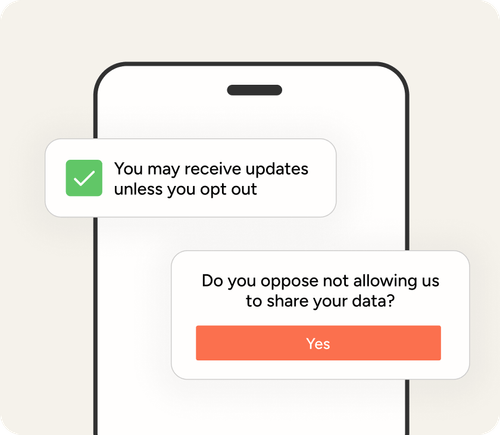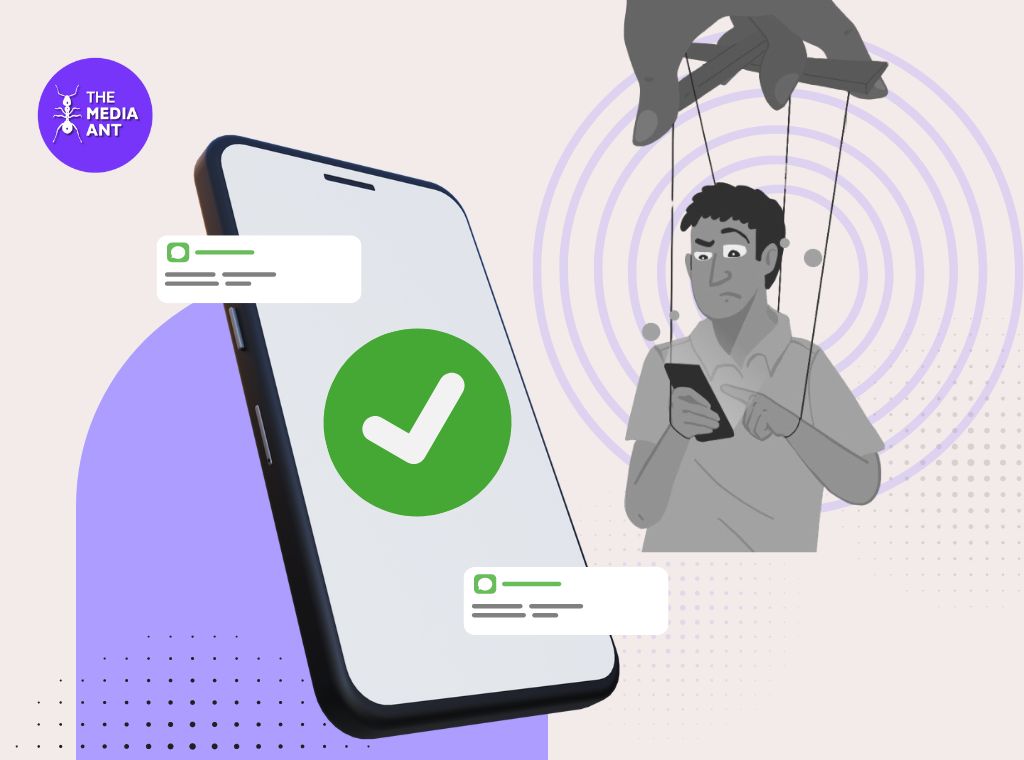At the heart of this study is a pressing question: How can we align business goals with the safeguarding of user interests? In the rush to meet business objectives and tight deadlines, it’s often the users who pay the price – not just with their wallets but with their personal data and privacy. The ASCI study highlights this imbalance, offering insights into how businesses can thrive without compromising ethical standards.
The Rise of Internet Users and the Emergence of Digital Pitfalls
As of early 2024, India has 751. 5 million people internet users – the beginning of a new chapter in the country’s process of going digital. These millions of users, starting from those heavily active on social networks to e-shops buyers use a wide range of web and mobile applications daily. As the world has changed with the help of this digital evolution and advanced tremendously in the technological and social arenas, it has come with certain issues that it brought with it.
A major problem that affects this emerging digital population is what is becoming known as dark patterns which is a deceptive design technique. These design techniques deceive users into performing a behavior that benefits the business, but may be to the detriment of the user, they may even lose money or give up their privacy.
Industry Landscape
Various industries are leveraging apps to connect with consumers directly, but not all practices are transparent or consumer-friendly. The industries analyzed include Cab Booking, Delivery & Logistics, E-commerce, Streaming Services, Fintech, Travel Booking, EdTech, Gaming, and Health Tech. Within these sectors, a study has identified prevalent deceptive patterns that might influence user interactions and decisions.
Unveiling Deceptive Tactics
Deceptive patterns in apps are more common than one might think. Out of the 53 apps studied, 52 had at least one deceptive behavior. Most deceptive patterns were found in purchasing or subscription flows (39.2%), followed by browsing/searching (27.2%), setting/privacy (25.2%), and onboarding (8.4%).
1. Privacy Deception: The Unseen Compromise
A staggering 79.2% of apps, according to research, specifically engage in tricking users into yielding more private information than they desire. This is mostly done through ‘dark patterns’ or elements of interface that deceive users into agreeing to terms that allow them to gather more data. Travel booking apps were the worst offenders, followed by delivery apps. Health-tech
It may also create an environment where users knowingly use interface and settings to give out more personal details than they expected, or implicitly accept the privacy settings that are not good for them. Some of these deficits can threaten the privacy of the users and can lead to potential misuse of personal data that is collected from the users.
2. Interface Interference: The Art of Misdirection
About 45.3 % of apps use design techniques that allow for the display of particular options while hiding others. This strategy leads users down patterns not suitable for them, for example, causing one to spend money on something he/she actually did not need or going for a more expensive variant.
Amazon uses interface interference by labeling products as ‘sponsored’ and recommending them as if they are influenced by the consumer’s search criteria, interfering with the search algorithm so as to offer hidden advertisements of products that are less useful to the consumer, but whose visibility is more commercially favorable to Amazon.
3. Drip Pricing: A Rising Cost Surprise
As to legal regulation, it was found that 43.4 % of the app’s practices involve drip pricing, or adding incremental costs of the apps. This strategy makes sure that the initial price is low but the final price is much higher, and the user has gone through the purchase process.
Like in the case of Amazon, Cleartrip put a highly promotional price and hopes to make their money at the end from other revenues. Nonetheless, in the course of the process, certain surcharges and taxes to the product are successively added to the price. This can lead to loss of customer trust as well as dissatisfaction since the final price is considerably higher than the initial offer.
4. False Urgency: Rushed Decisions
As for tricks with an artificially introduced sense of urgency, like saying that something is in ‘low stock’ or ‘only for a limited time, 32% of the apps employ it. This strategy nudges users into making decisions with speed hence making wrong decisions.
Practo may simulate unavailable time slots for appointments, to give a perception of scarcity. This can create a falsified perception that users need to book at the shortest possible time in order to clinch an appointment. Consumers can make decisions carelessly without exploring opportunities or can be pressured in the process of getting health care.
5. Nagging: The Persistent Push
The most common form of intrusion via App is nagging, which occurs in 15% of the applications and comes as constant pop-ups or notifications. This may prove to be irritating for the users as it hinders one from doing things that he/she wants to do or even focusing.
Other typical examples of nagging, such as Candy Crush, are designed with highly frequent invites and notifications to make microtransactions or to come back to the game in the first place, constantly occupying the user’s device.
6. Bait & Switch: Expectation vs. Reality
In 13.2% of apps, the bait and switch tactic advertises one outcome but delivers something different, leading to user dissatisfaction and mistrust.
Dream11 might promote a big prize pool for their fantasy leagues, attracting users to participate. However, the actual likelihood of winning significant prizes can be lower than suggested, due to the structure of the contests and the number of participants. Users may feel deceived when the chances of winning or the nature of the prizes don’t match the promotional hype.
7. Basket Sneaking: Unwanted Additions
Similarly, 13.2% of apps add items to a user’s shopping cart without clear consent, often going unnoticed until the final review stage.
BigBasket may pre-select additional items or suggest add-ons during the checkout process, such as a popular snack or household item, which users can accidentally purchase if not attentive. Customers might end up buying items they did not initially want, increasing their total expenditure unnecessarily.
8. Forced Action: Compelled Conformity
About 11.3% of apps require users to perform specific, often undesired actions to access content or continue with the service, limiting freedom and choice.
Netflix has been known to convert free trials into paid subscriptions automatically without making this auto-renewal mechanism clear to users upfront. As a result, users might not be aware they need to cancel to avoid charges.Users might unknowingly incur subscription fees if they do not take action to cancel the service before the trial period ends.
9. Confirm Shaming: The Guilt Trip
Using social pressure or guilt, 7.5% of apps coax users into confirming actions they might not be entirely comfortable with, exploiting emotional vulnerabilities. “Confirm shaming” was common in travel apps where users were guilted into making a choice.
Byju’s uses aggressive marketing tactics that may include making users feel guilty for not subscribing to or upgrading their services, a strategy that pressures users to make purchases or commitments
10. Subscription Trap: The Binding Surprise
Trapping users in subscriptions without making the terms clear is a tactic seen in 1.9% of the apps, making cancellation a cumbersome process.
UpGrad may offer courses with free trials or at a discounted rate for the first few months, which automatically convert into a paid subscription that is difficult to cancel. Users might find themselves locked into long-term payments they were not fully aware they were committing to.
11. Trick Question: The Misleading Prompt

Another 1.9% of apps use confusing or ambiguous language to direct users towards unintended actions, often benefiting the service at the user’s expense.
CRED could use complex language or misleading prompts during the sign-up process or while offering new services, which may lead users to agree to terms they do not fully understand, such as automatic enrollment into new financial products. Users may find themselves using financial services or products that they didn’t intend to sign up for, impacting their financial planning and possibly incurring unwanted costs.
12. Disguised Ads: The Invisible Influence
Interestingly, none of the apps in the study were found to use ads disguised as regular content, suggesting a possible shift towards more overt advertising methods or simply better compliance with advertising standards.
Softpedia utilizes disguised ads where download buttons lead users to advertisements rather than the intended software download, blurring the line between content and ads.
ASCI and DoCA’s Proactive Measures Against Deceptive Patterns
Recognizing the potential hazards of deceptive design, two pivotal entities, the Advertising Standards Council of India (ASCI) and the Department of Consumer Affairs (DoCA), have stepped up. Their collaboration aims to shield consumers from these underhanded tactics. A timeline of their actions highlights their commitment:
- 22nd November 2022: ASCI published a discussion document spotlighting the issue of deceptive patterns.
- 13th June 2023: A crucial meeting between ASCI, DoCA, and other stakeholders was held to forge a strategy against deceptive patterns.
- 15th June 2023: ASCI released guidelines identifying four major deceptive patterns and outlining their potential harms.
- 30th November 2023: DoCA took a significant step by officially issuing guidelines to prevent and regulate thirteen identified deceptive patterns.
These guidelines define dark commercial patterns as manipulative elements in digital interfaces that “subvert or impair consumer autonomy, decision-making, or choice,” focusing on unethical business practices.
Pioneering Research by ASCI Academy and Parallel
As a first of its kind project, ASCI Academy collaborated with Parallel, a progressive product design agency established in Bengaluru to investigate more about the frequency and effect of such deceptive elements in a number of apps in India. This kind of study was carried out for the first time in India primarily to raise awareness and advocacy of ethical design principles and to popularize the creation of better and more responsible digital spaces.
Research Insights:
- Scope of Analysis: Over 12,000 screens were meticulously analyzed.
- Apps Involved: The study encompassed 53 apps spanning nine industries.
- Reach: The apps under scrutiny have been downloaded more than 21 billion times, reflecting their massive influence and the broad scope of potential impact.
In short, deceptive patterns are widespread especially in areas like privacy and security. By becoming aware of these sneaky tactics, you’ll be better equipped to use such apps more safely and make informed decisions online. Stay alert, and stay secure!
Source : Study of deceptive patterns in top Indian apps : ASCI Report





